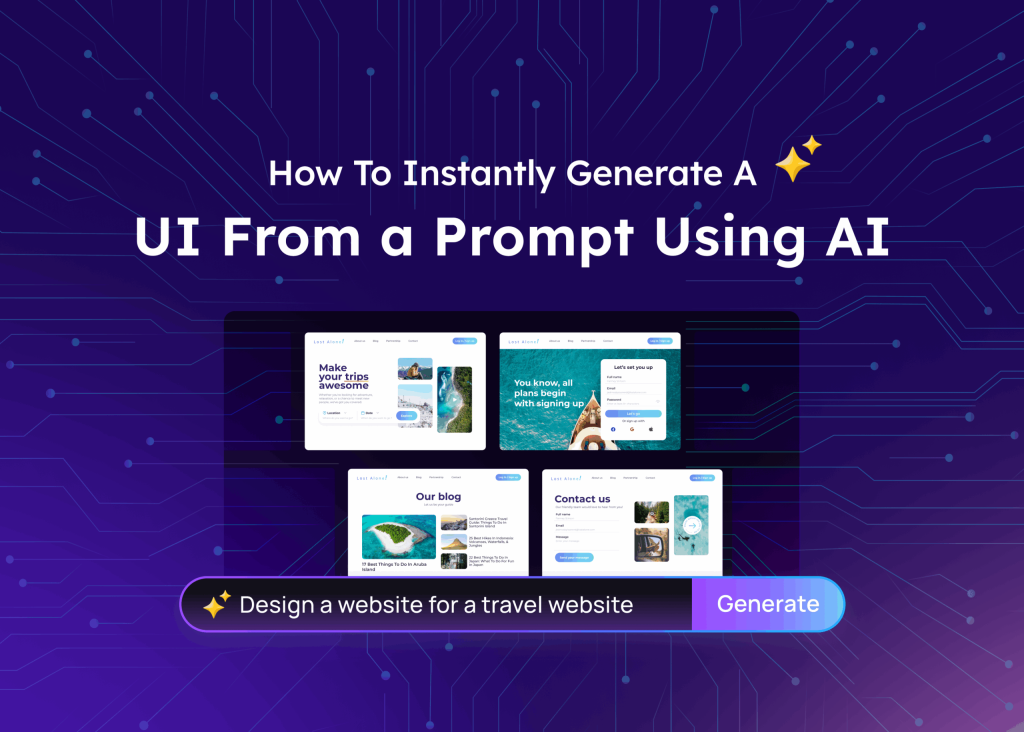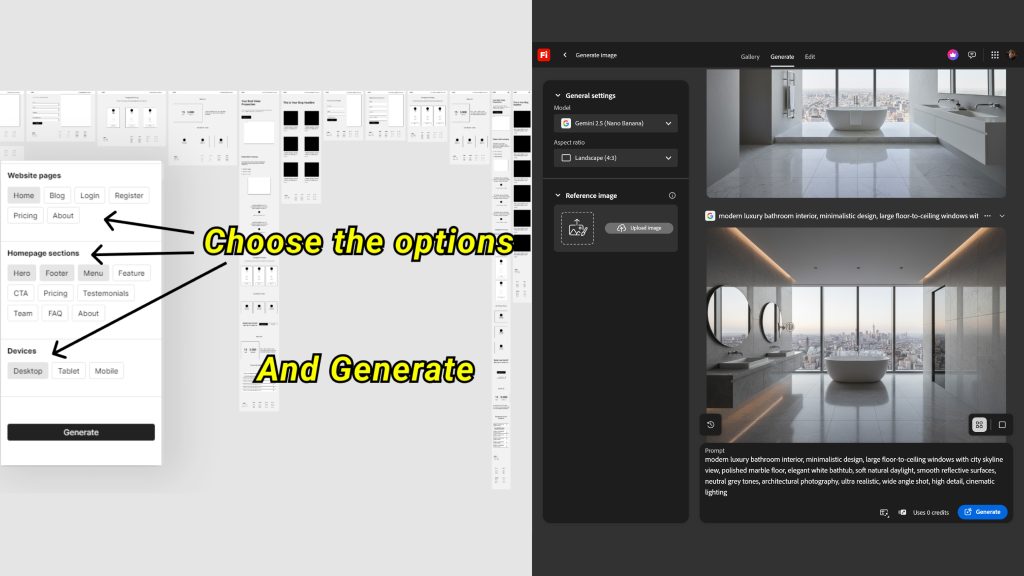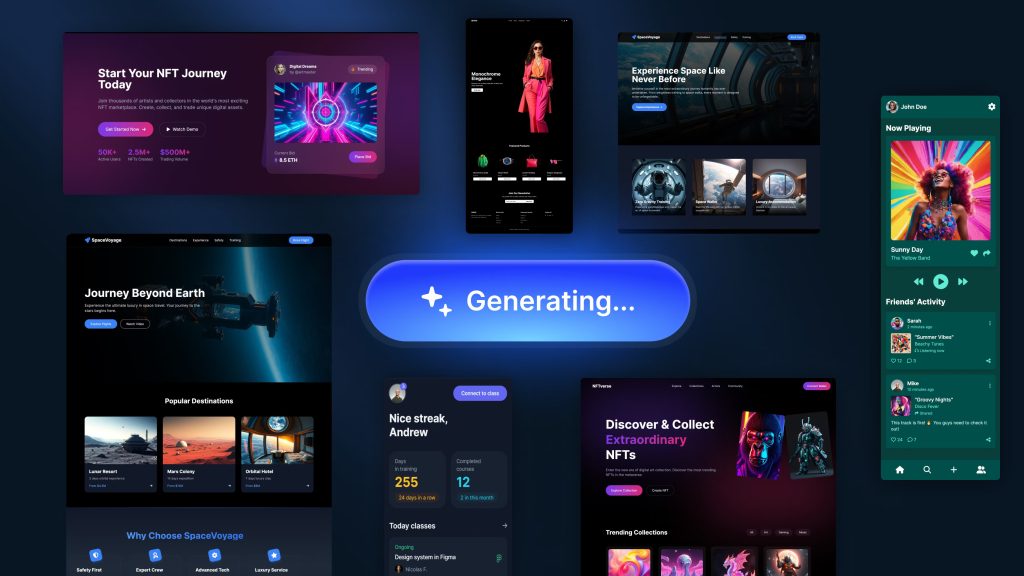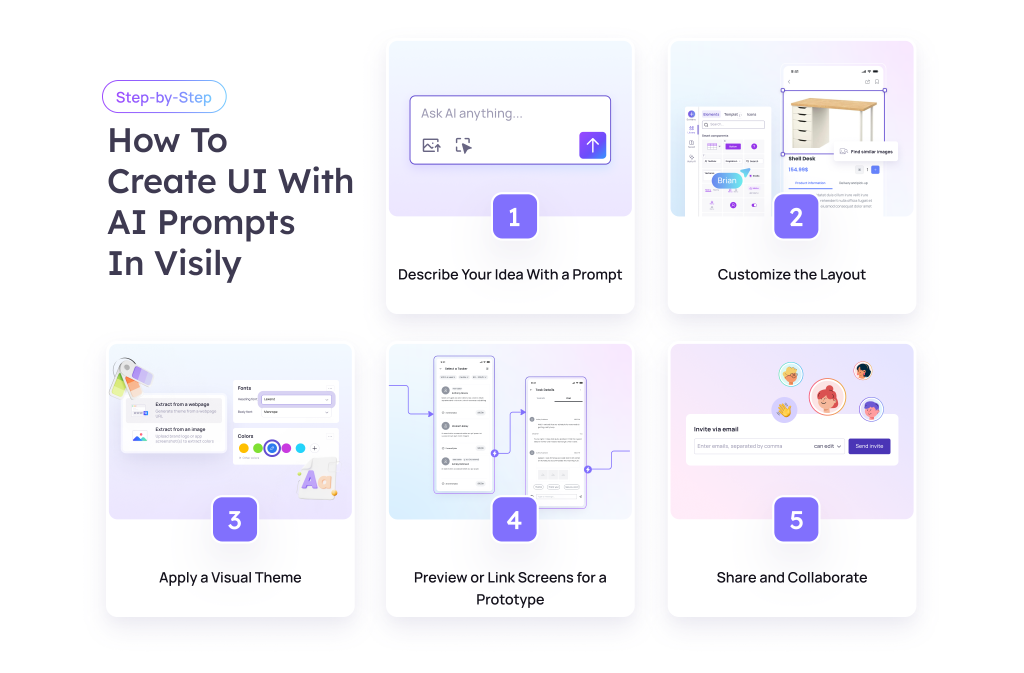Generative Design & AI-Assisted Interfaces: What Happens When AI Designs UI?
A button’s color, a menu’s rhythm, a layout’s balance these decisions were once guided solely by human intuition. Today, they can be proposed by an algorithm in seconds. Generative design isn’t replacing creativity; it’s reshaping where it begins. Artificial intelligence has entered the design studio, not as a silent observer but as an active participant. Interfaces are being imagined, generated, and refined through AI systems that understand structure, hierarchy, and user behavior. The question is no longer if AI can design, but how design itself changes when it does.

Source: [https://www.visily.ai/blog/how-to-create-ui-with-ai-prompts/]
A Shift in How Design Is Created
Across the industry, design teams are experimenting with AI-assisted workflows. From Airbnb’s internal prototyping tools to Notion’s smart interface adaptations, AI is being used to automate early design stages generating layouts, suggesting patterns, and even proposing interactions based on previous projects.
Tools like Figma AI and Adobe Firefly can now produce usable wireframes or mockups in minutes. With a few prompts, designers receive structured layouts, complete with colors, typography, and spacing that follow recognized design principles. What once took hours of sketching and iteration can now be achieved through intelligent suggestion.

Source: [Figma and Adobe Firefly]
These systems do not “think” like humans, but they have been trained to recognize design logic. Hierarchies, grid systems, and component placement are derived from vast datasets of successful designs. Once a designer’s intent is described, an initial concept is produced almost instantly ready to be curated, adjusted, and improved.
The Designer’s Role Is Changing
Generative AI has not made designers obsolete it has changed what they focus on. Repetition is being handled by algorithms, leaving humans to work where machines still cannot: context, emotion, and purpose.
In many teams, AI now acts as a creative catalyst. Designers can explore multiple directions faster, test hypotheses instantly, and make more informed decisions. Instead of wondering what layout might work, they can compare five data-driven options in real time. Microsoft’s Copilot integration into design environments has illustrated this shift clearly. Routine tasks such as resizing components, adjusting visual hierarchy, or suggesting variations can be delegated to AI. The result? More time to think about storytelling, brand expression, and accessibility.
Benefits at a Glance
- Speed & Efficiency: Early prototypes and wireframes can be generated automatically, freeing hours in every sprint.
- Exploration: AI tools surface alternatives that may not have been considered manually.
- Personalization: Data-driven recommendations allow interfaces to adapt to users in real time.

Source:[adamfard.com/blog/ai-ui-generator]
However, each benefit introduces a new kind of responsibility one that requires deliberate oversight.
When Automation Needs Supervision
Reliability remains a central concern. AI models may misinterpret design context or prioritize aesthetics over usability. Accessibility often has to be checked manually, since color contrast, screen reader compatibility, and cognitive load are difficult for algorithms to evaluate fully.
Brand coherence can also drift when too much is left to automation. A layout generated for efficiency might look polished but fail to express the brand’s tone or personality.To maintain quality, teams are beginning to treat AI output as a first draft rather than a final product. What is produced by machines must still be refined by humans and that collaboration, when done right, leads to better results than either side could achieve alone.
Redefining Authorship in Design
The rise of generative interfaces raises a deeper question: who gets credit for creativity when an idea is shaped by both human and machine?
In practice, the designer’s authorship is not diminished it’s amplified. By guiding AI systems with prompts, parameters, and critique, designers shape the outcome as much as they would through manual sketching. The process has become less about execution and more about direction.
As one designer at Airbnb described it, “The craft isn’t gone it’s just moved upstream.”

Source:[https://www.visily.ai/blog/how-to-create-ui-with-ai-prompts]
A Future Designed Together
AI’s entry into UI/UX design isn’t a passing experiment. It marks the start of a collaborative future where imagination and computation evolve side by side. Generative tools will continue to get better at understanding intent, while designers will refine how to communicate it.
The outcome isn’t a loss of creativity but a redistribution of it from creating pixels to creating possibilities.
The interfaces of tomorrow may be generated in seconds, but the empathy, curiosity, and vision behind them will remain unmistakably human.
